Integumentary System
1/43
There's no tags or description
Looks like no tags are added yet.
Name | Mastery | Learn | Test | Matching | Spaced |
|---|
No study sessions yet.
44 Terms
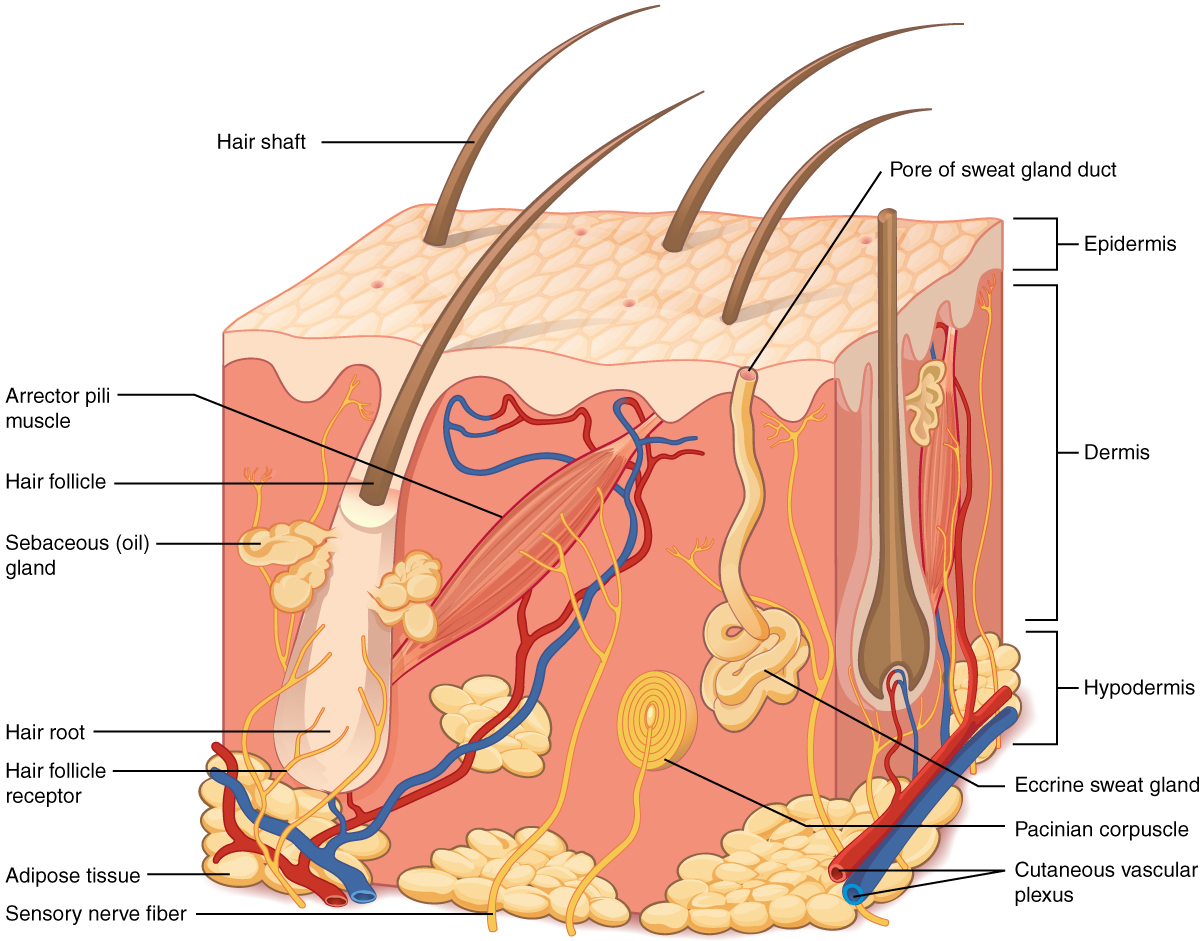
Skin (Cutaneous Membrane)
Definition: The body's outer covering made of epithelial and connective tissue.
Importance: Protects internal organs, regulates temperature, and provides sensory input.
Function: Acts as a barrier, regulates heat, synthesizes vitamin D, and detects stimuli.
Location: Covers the entire body.
Quick Tip: Skin is your first line of defense — treat it gently and moisturize regularly.
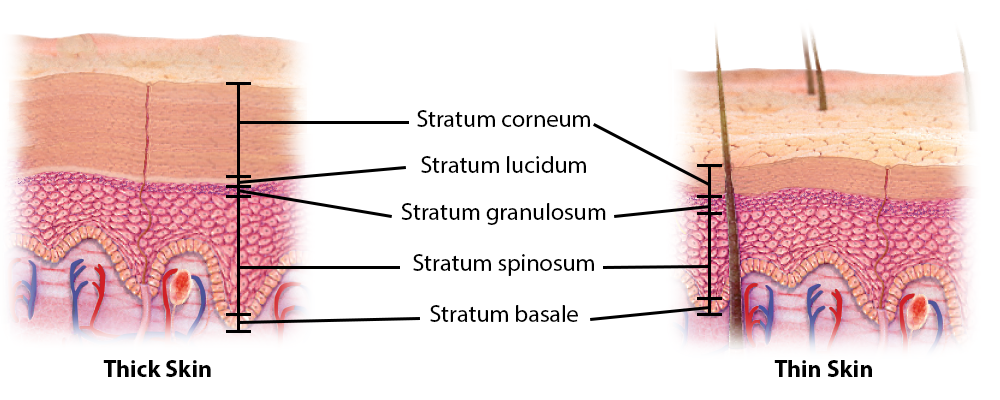
Thin Skin
Definition: Type of skin that grows hair and lacks dermal ridges.
Importance: Provides flexibility and sensory input.
Function: Covers most of the body and allows hair growth.
Location: Found everywhere except palms and soles.
Quick Tip: If it grows hair, it’s thin skin.
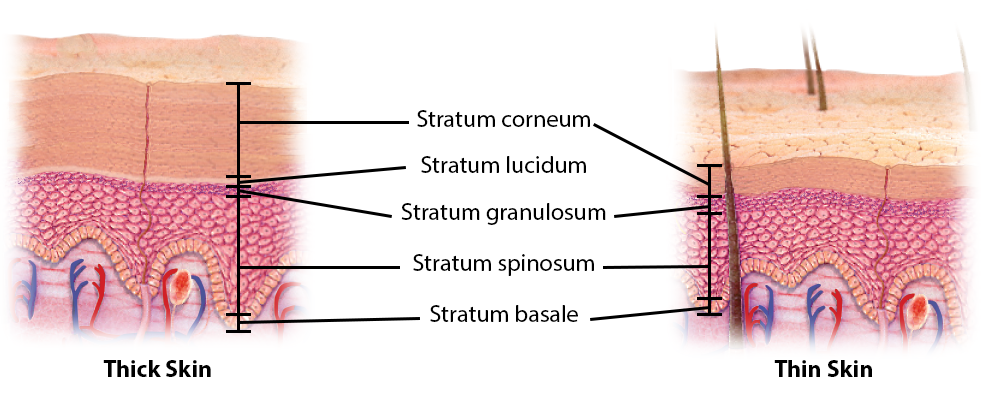
Thick Skin
Definition: Hairless skin with dermal ridges designed for friction resistance.
Importance: Enhances grip and protects high-friction areas.
Function: Prevents damage in areas of frequent contact.
Location: Palms of hands and soles of feet.
Quick Tip: Fingerprints come from thick skin’s dermal ridges.
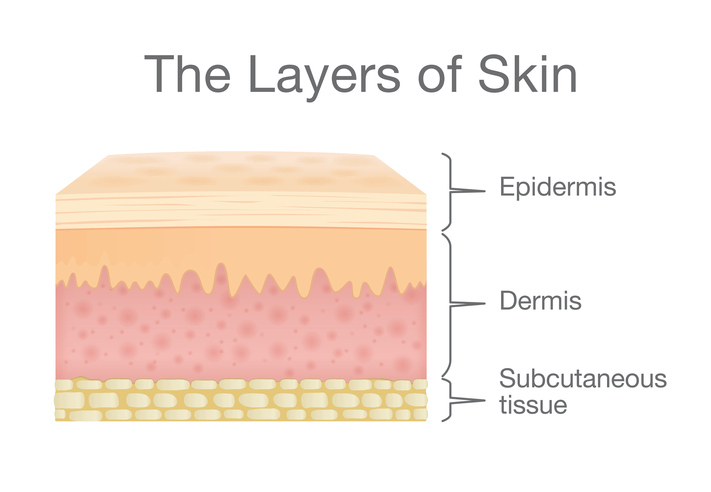
Epidermis
Definition: The outermost layer of skin made of stratified squamous epithelial tissue.
Importance: Provides waterproof protection and regenerates quickly.
Function: Shields against dehydration, UV rays, and pathogens.
Location: Superficial layer of skin. Quick Tip: The epidermis is avascular — it gets nutrients from the dermis below.
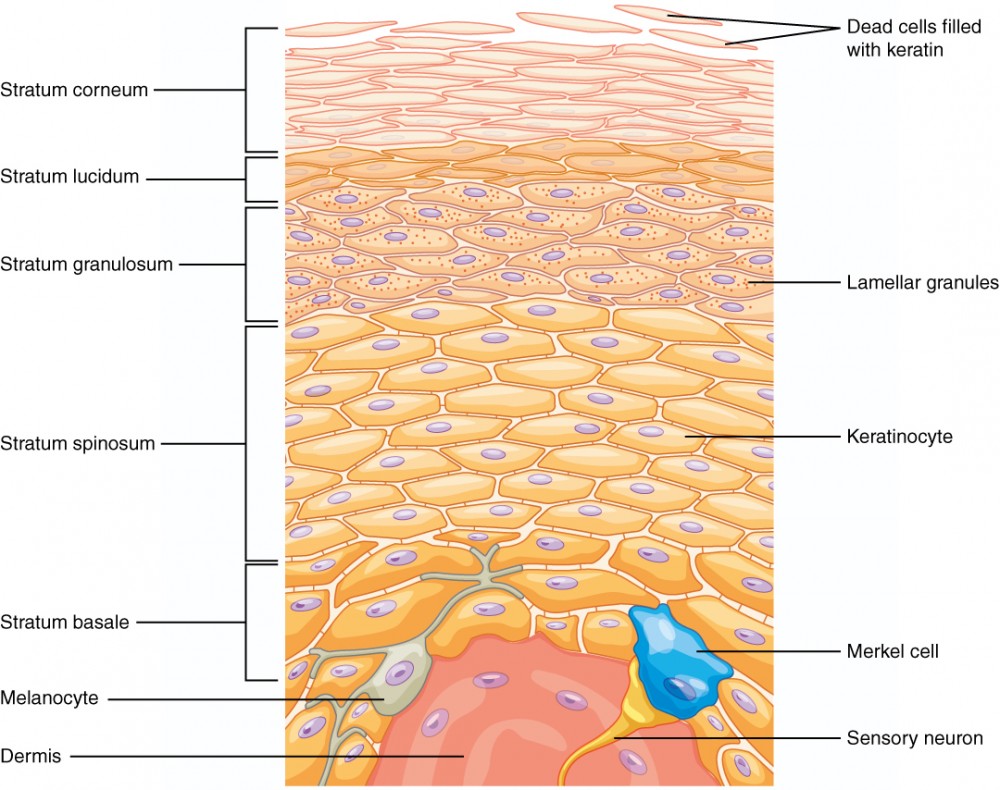
Stratum Corneum
Definition: Top layer of epidermis made of dead keratinized cells.
Importance: Acts as a tough, protective barrier.
Function: Prevents water loss and blocks pathogens.
Location: Outermost layer of epidermis.
Quick Tip: This is the layer that flakes off when your skin peels.
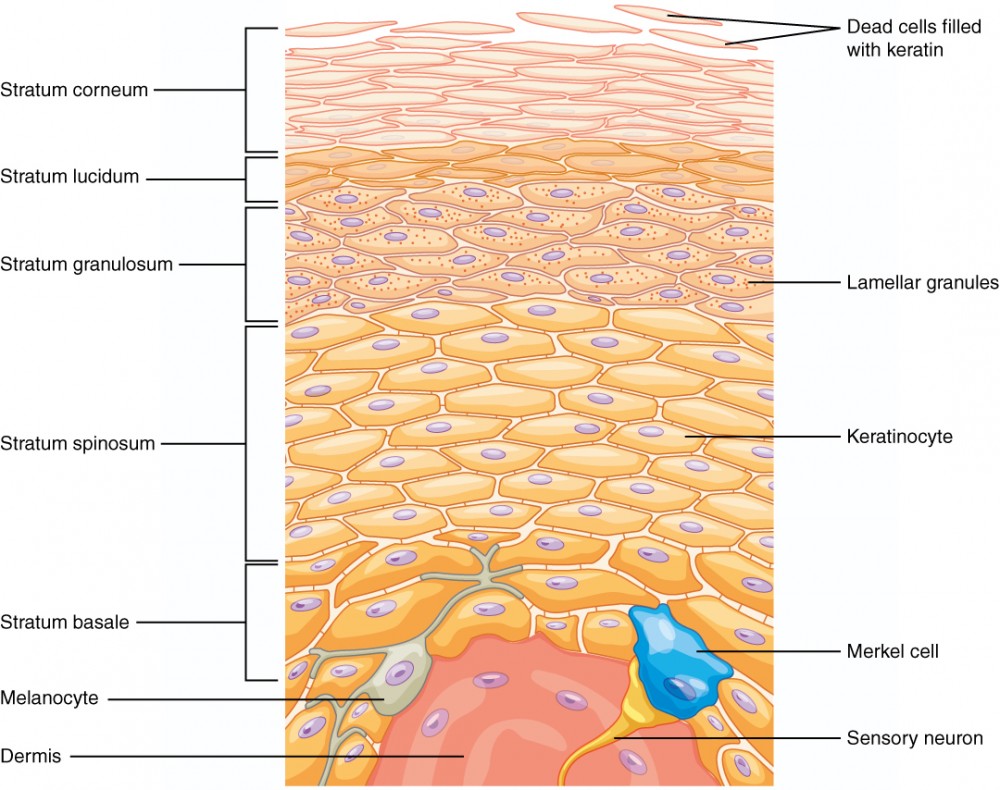
Stratum Lucidum
Definition: Clear layer found only in thick skin.
Importance: Adds extra protection in high-friction areas.
Function: Enhances durability of thick skin.
ABSENT IN THIN SKIN
Location: Palms and soles. Quick Tip: If it’s not on your palm or sole, it’s not lucidum
Surface Film
Definition: A thin layer of sweat, oil, and dead cells on the skin.
Function: Protects, hydrates, and prevents infection.
Location: On the outermost skin layer (stratum corneum).
Importance: Keeps skin healthy and balanced.
Quick Tip: “Sweat + oil = skin shield” It’s your body’s natural armor—keeping moisture in and germs out.
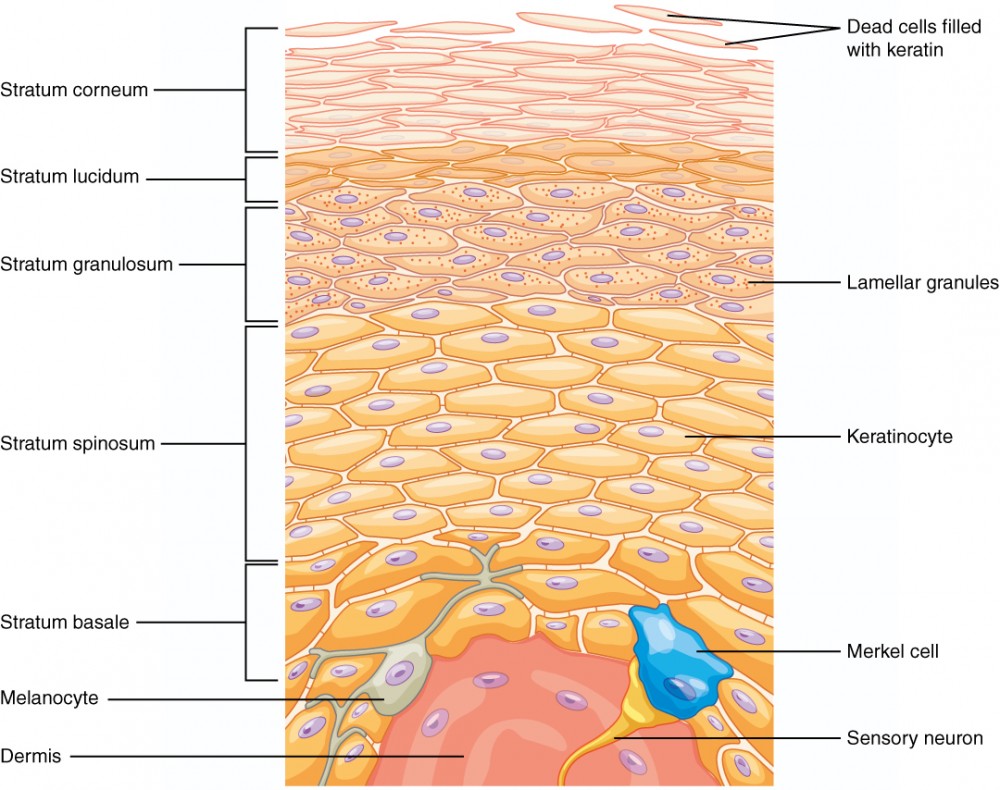
Stratum Granulosum
Definition: Layer where cells begin to die and keratinize.
Importance: Prepares cells for protective outer layer.
Function: Transitions living cells to dead protective cells.
Location: Middle layer of epidermis.
Quick Tip: This is the skin’s “prep zone” before cells die.
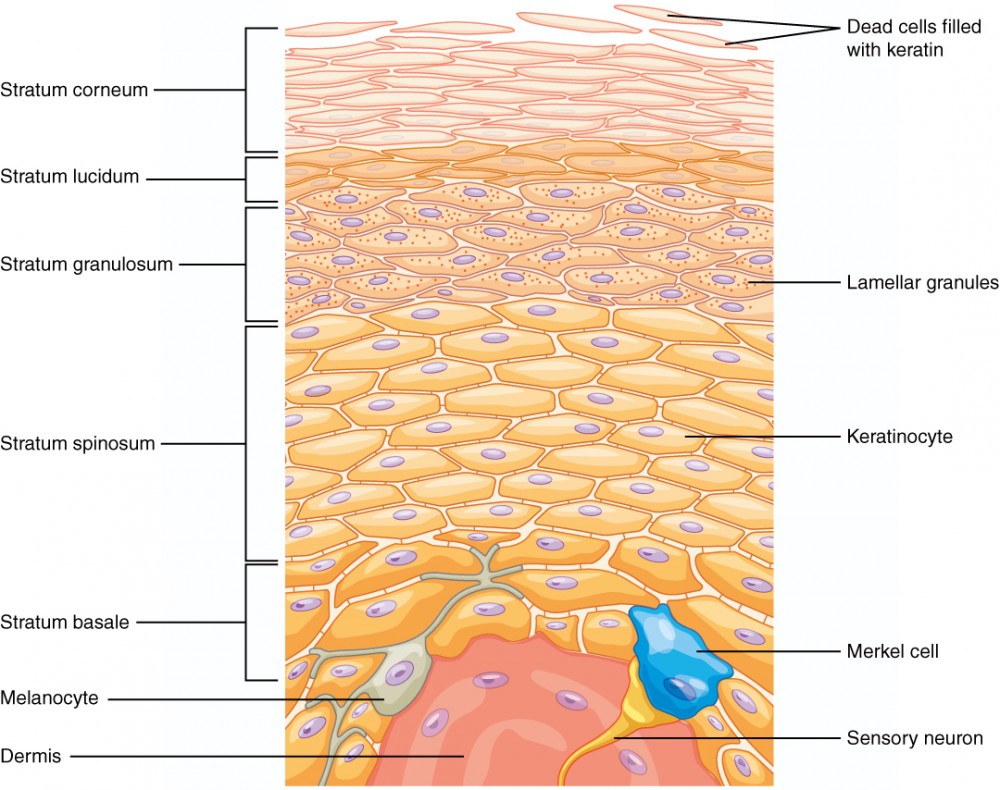
Stratum Spinosum
Definition: Layer where cells are held together by desmosomes.
Importance: Provides structural integrity.
Function: Supports skin strength and some cell division.
Location: Just above the stratum basale.
Quick Tip: Desmosomes = skin’s Velcro.
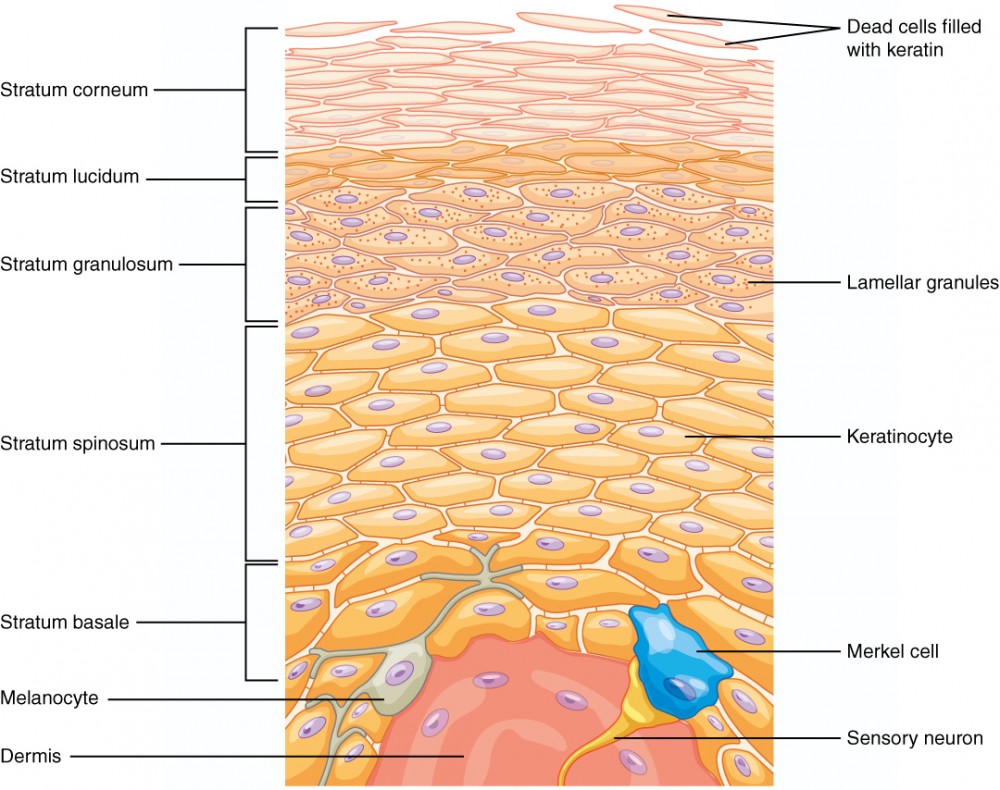
Stratum Basale
Definition: Deepest layer of epidermis with high mitotic activity.
Importance: Generates new skin cells.
Function: Replaces dead cells with new ones.
Location: Base of epidermis.
Quick Tip: Skin regeneration starts here.
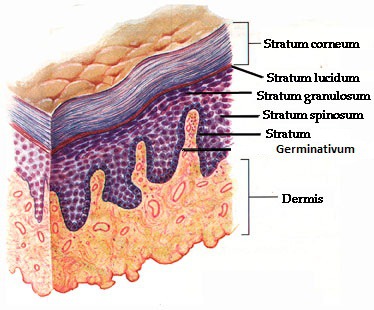
Stratum Germinativum
Definition: Combined term for stratum basale and stratum spinosum.
Importance: Site of active cell division.
Function: Produces new epidermal cells.
Location: Lower layers of epidermis.
Quick Tip: Germinativum = growth zone.
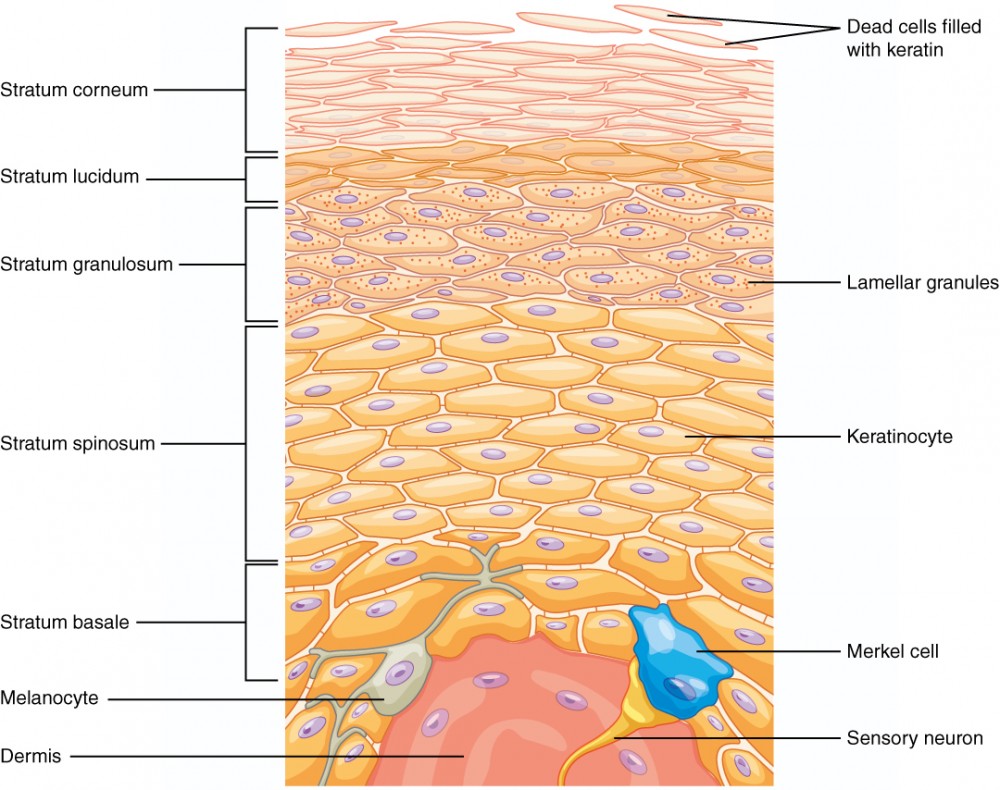
5 Layer Epididermis (Superifical to deep)
Stratum corneum
Composed of dead, flattened keratinocytes.
Acts as a tough, protective barrier.
Stratum lucidum ✨ (only in thick skin like palms and soles)
Thin, clear layer of dead cells.
Adds extra protection and thickness.
Stratum granulosum
Cells begin to die and accumulate keratohyalin granules.
Helps waterproof the skin.
Stratum spinosum 🕸
Contains living keratinocytes connected by desmosomes.
Provides strength and flexibility.
Stratum basale (germinativum) 🌱
Deepest layer, where cell division occurs.
Contains melanocytes and stem cells for regeneration.
(Come, lets, get, sun, burnt)
Keratinize
Definition: When skin cells produce keratin, a tough protein, and become part of the outer protective layer.
Function: Makes skin strong, water-resistant, and protective.
Location: Happens in the epidermis, especially in the stratum corneum.
Importance: Shields your body from germs, injury, and dehydration.
Quick Tip: Think of it like “armor-building”—your skin cells toughen up as they rise to the surface
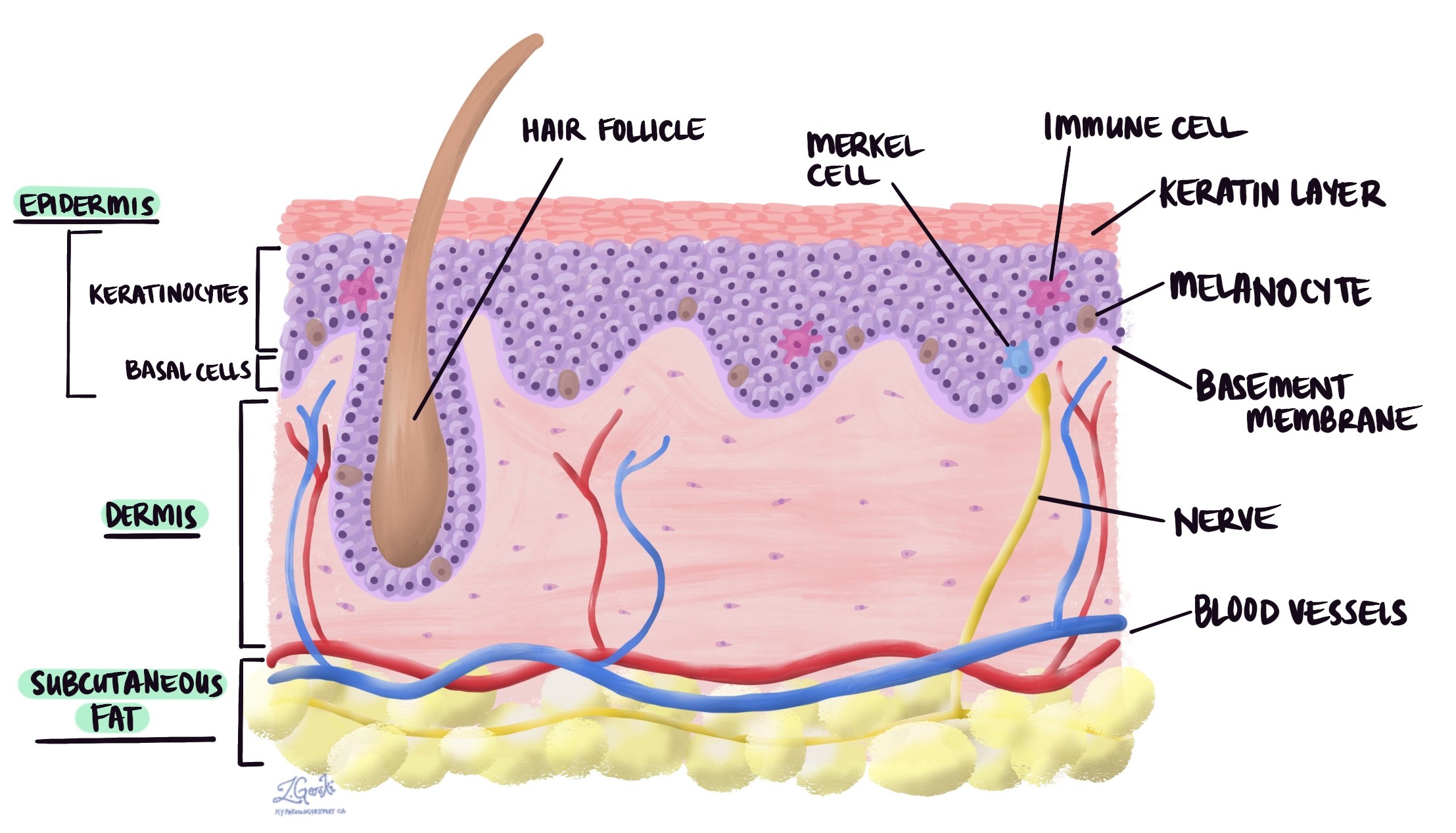
Keratinocytes
Definition: Cells that produce keratin.
Importance: Waterproofs and protects skin.
Function: Form the bulk of the epidermis.
Location: Throughout epidermis.
Quick Tip: Dry skin often means keratinocytes need support.
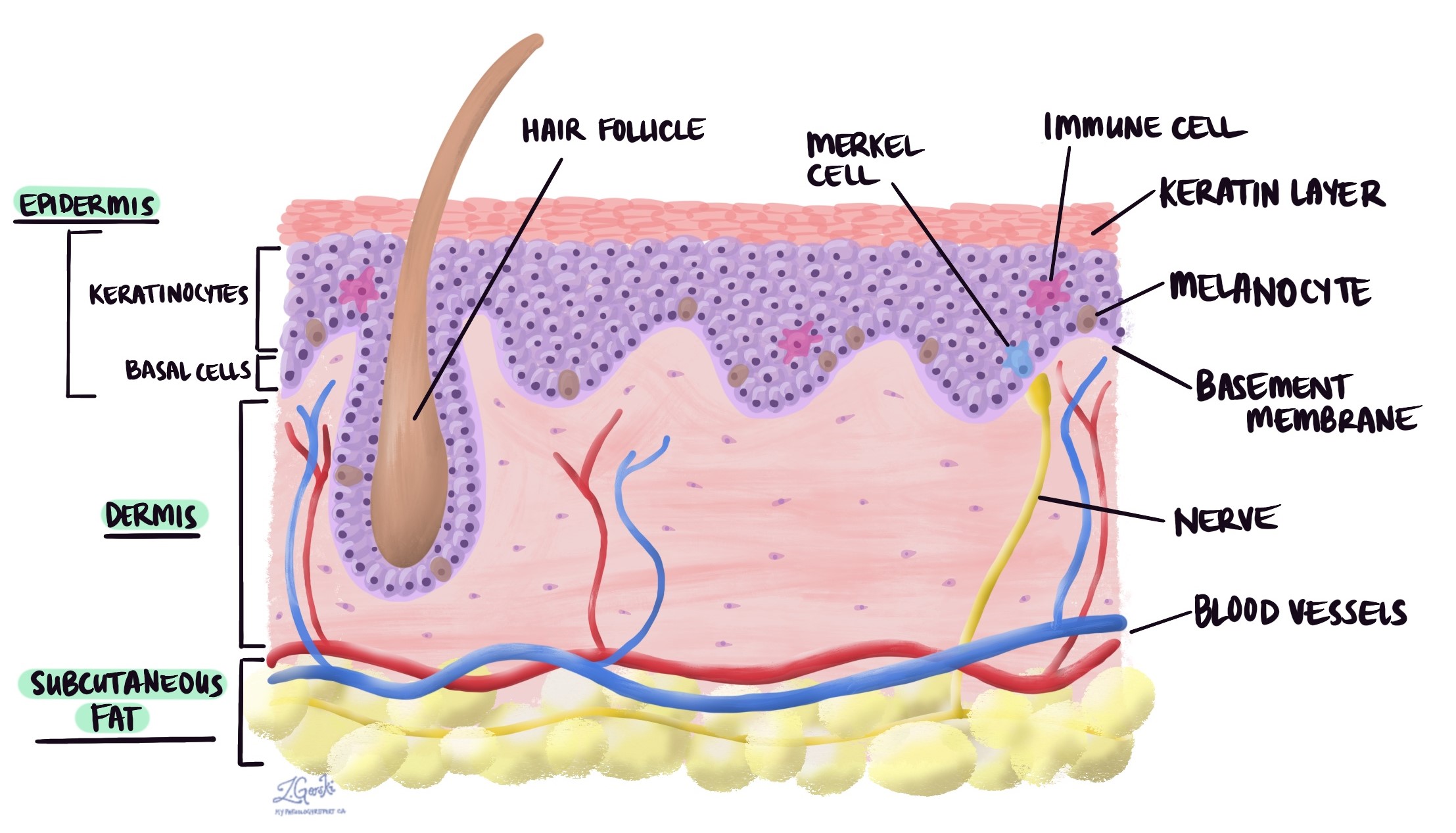
Melanocytes
Definition: Cells that produce melanin pigment.
Importance: Protects DNA from UV damage.
Function: Absorbs UV light to prevent mutations.
Location: Stratum basale.
Quick Tip: More sun = more melanin = darker skin.
Dendritic Cells
Definition: Immune cells that respond to skin damage.
Importance: First responders to infection.
Function: Trigger immune response.
Location: Epidermis.
Quick Tip: Scratches activate these defenders.
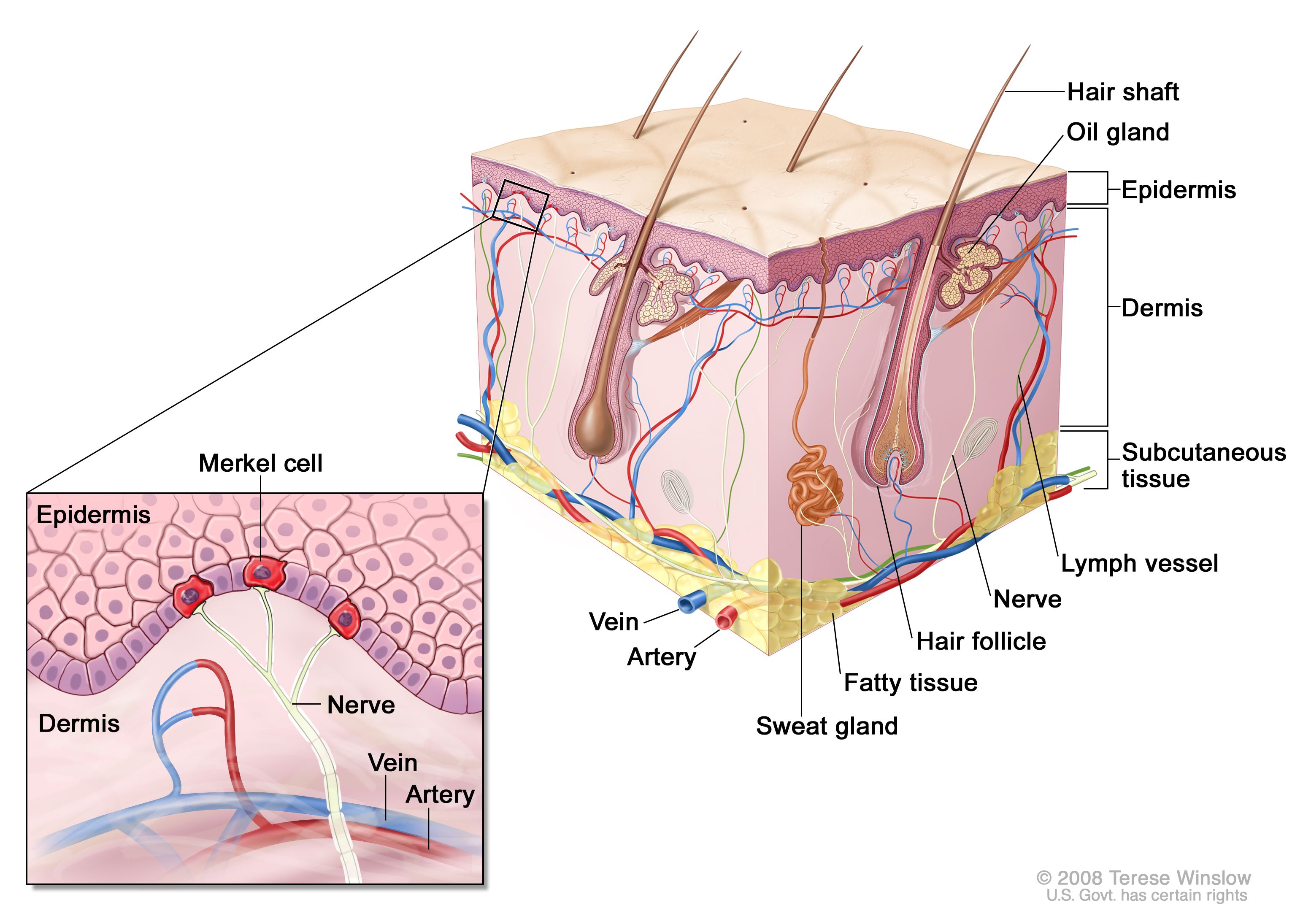
Merkel Cells
Definition: Sensory receptors for touch.
Importance: Detect light pressure.
Function: Relay tactile information.
Location: Stratum basale.
Quick Tip: Sensitive areas like fingertips have more Merkel cells.
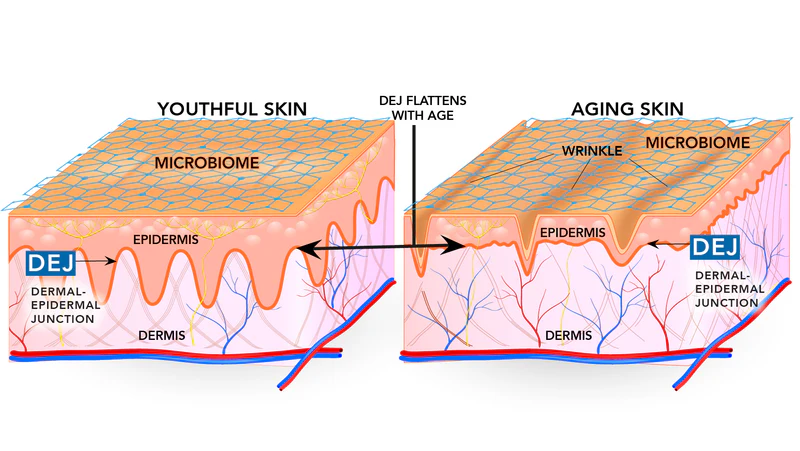
Dermoepidermal Junction
Definition: Basement membrane between epidermis and dermis.
Importance: Anchors skin layers together.
Function: Prevents separation and supports skin structure.
Location: Between epidermis and dermis.
Quick Tip: Blisters form when this junction is disrupted.
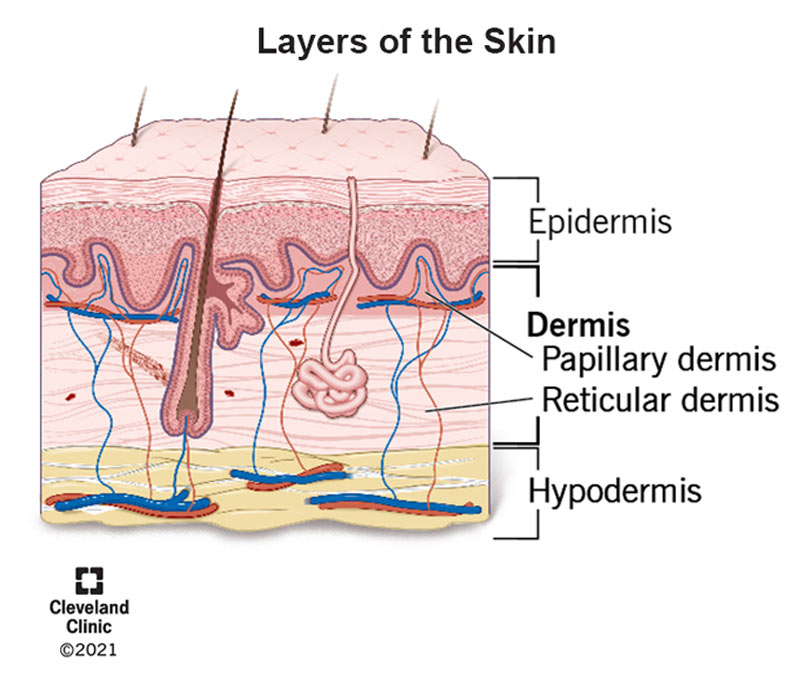
Dermis
Definition: Thicker, vascular layer beneath epidermis.
Importance: Supports skin with blood supply and strength.
Function: Nourishes epidermis and provides elasticity.
Location: Beneath epidermis.
Quick Tip: Scar tissue forms here due to low mitosis.
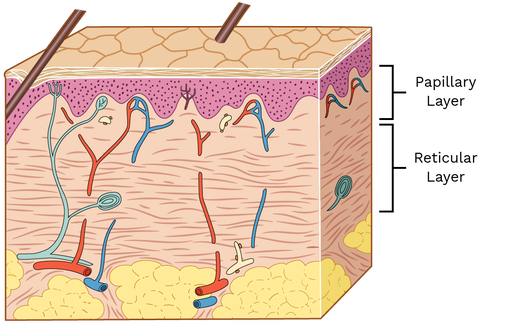
Papillary Layer
Definition: The upper layer of the dermis, just beneath the epidermis.
Function: Supplies nutrients to the skin, supports temperature regulation, and helps with touch sensation.
Location: Directly under the epidermis, part of the dermis.
Importance: Contains capillaries and nerve endings—key for feeling and skin health.
Quick Tip: Think of it as the “support crew” for your skin’s surface—feeding it and helping you feel touch
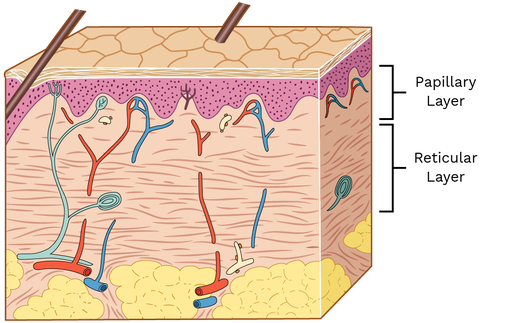
Reticular Layer
Definition: The deeper, thicker part of the dermis.
Function: Provides strength, elasticity, and houses structures like sweat glands, hair follicles, and blood vessels.
Location: Beneath the papillary layer, part of the dermis.
Importance: Supports skin structure and anchors important skin functions.
Quick Tip: Think of it as the “foundation layer”—strong, stretchy, and full of working parts.
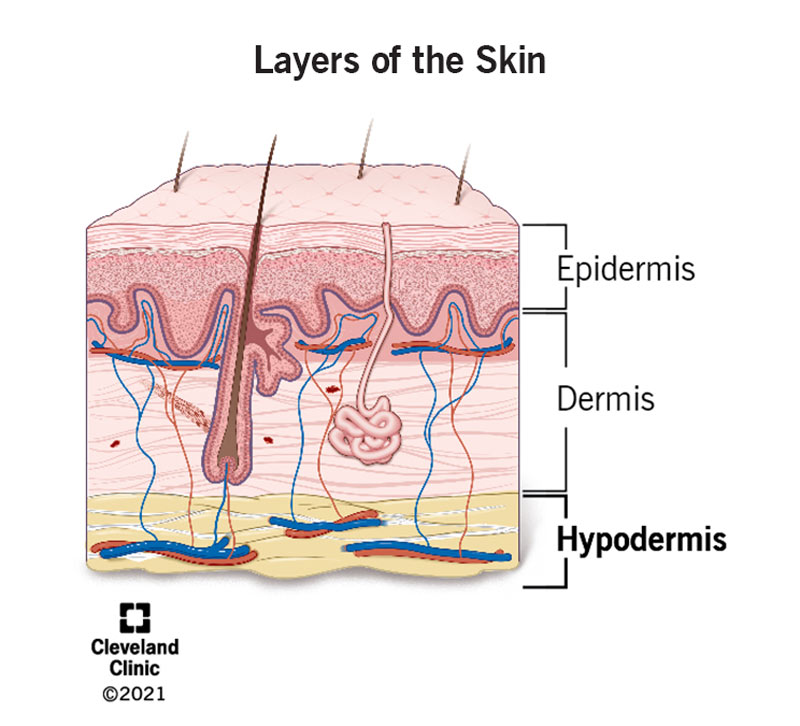
Hypodermis (Subcutaneous Layer)
Definition: Fat-rich layer beneath dermis.
Importance: Insulates and cushions the body.
Function: Stores energy and regulates temperature.
Location: Deepest skin layer.
Quick Tip: Pinch your skin — the squishy part is hypodermis.
Hair
Definition: Keratinized shaft growing from follicle.
Importance: Protects and senses environment.
Function: Detects touch and regulates temperature.
Location: Thin skin areas.
Quick Tip: Goosebumps = arrector pili muscle action.
Nails
Definition: Keratin plates from germinal matrix.
Importance: Protects fingertips and aids precision.
Function: Enhances fine motor skills.
Location: Ends of fingers and toes.
Quick Tip: Cuticle protects nail root from infection.
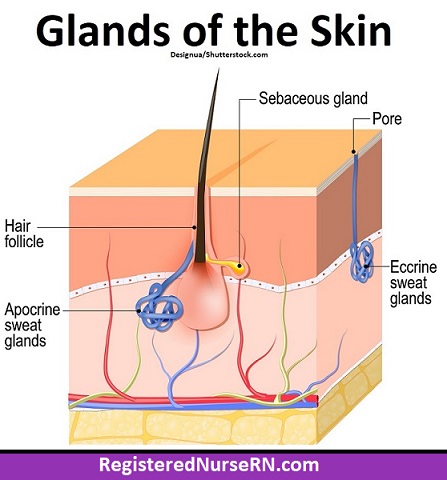
Eccrine Sweat Glands
Definition: Sweat glands that regulate temperature.
Importance: Prevents overheating.
Function: Secrete sweat directly to skin surface.
Location: All over body.
Quick Tip: Active during exercise or heat.
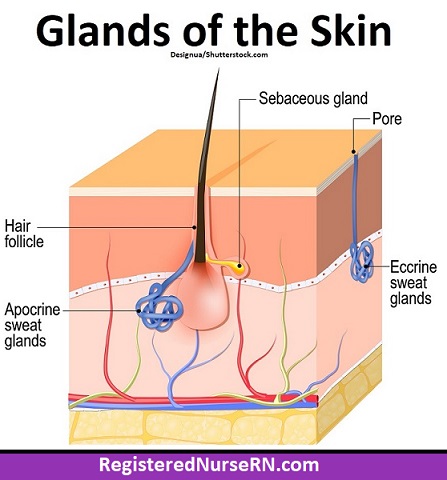
Apocrine Sweat Glands
Definition: Stress-related sweat glands.
Importance: May release pheromones.
Function: Secrete sweat through hair follicles.
Location: Armpits and groin.
Quick Tip: Start working at puberty.
Sebaceous Glands
Definition: Oil glands that secrete sebum.
Importance: Lubricates and protects skin and hair.
Function: Moisturizes and prevents drying.
Location: Near hair follicles.
Quick Tip: Overactive glands = acne risk.
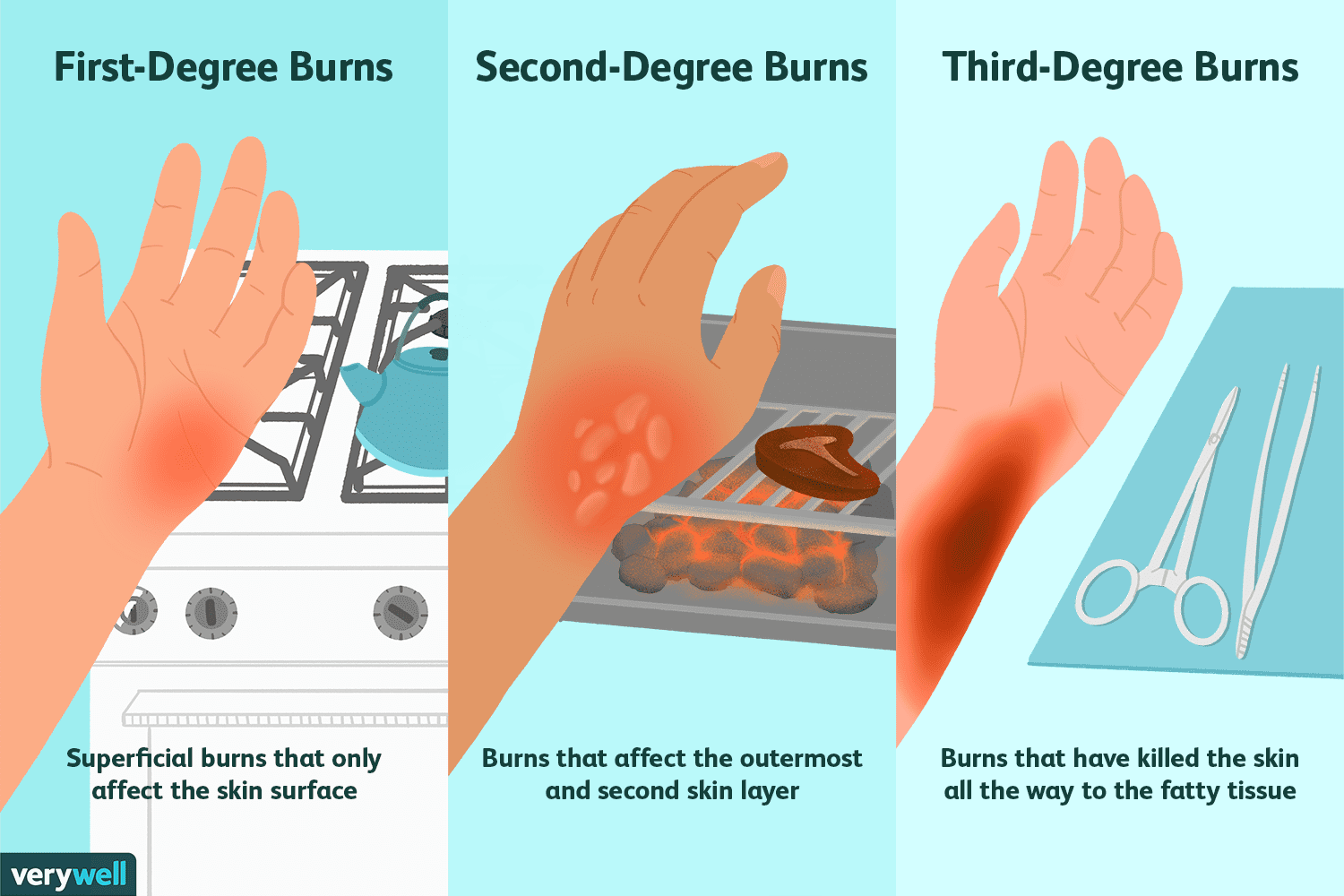
First Degree Burn
Definition: A mild burn affecting only the outer layer of skin (epidermis).
Symptoms: Redness, pain, and slight swelling—no blisters.
Location: Can happen anywhere on the skin, often from sunburn or brief contact with heat.
Importance: Usually heals in a few days without scarring; still needs care to prevent infection.
Quick Tip: Cool the area with water (not ice), keep it clean, and moisturize gently.
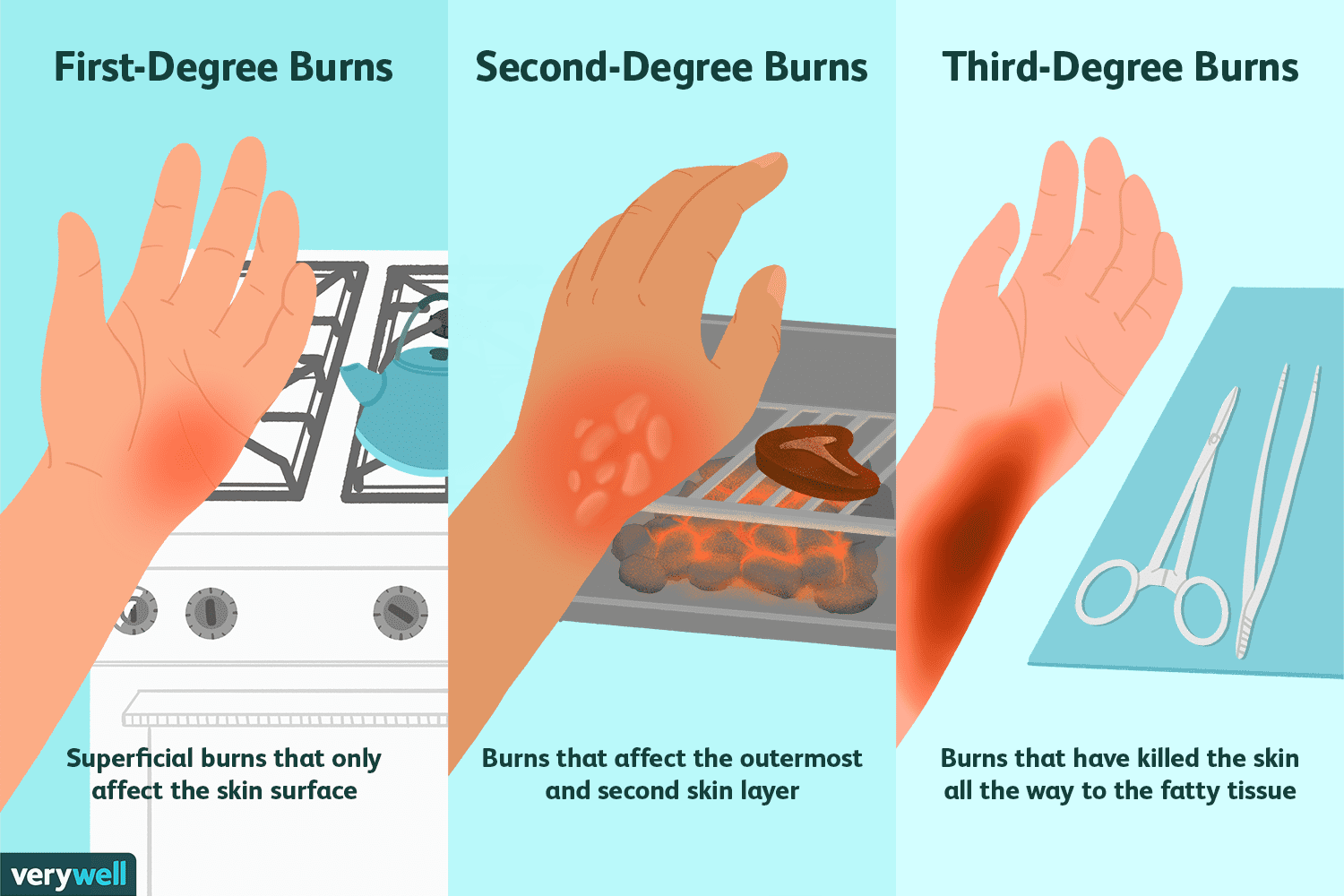
Second Degree Burn
Definition: A burn that affects both the epidermis and part of the dermis.
Symptoms: Redness, pain, swelling, and blisters.
Location: Can occur anywhere on the skin from hot liquids, flames, or chemicals.
Importance: More serious than first-degree; may scar and needs proper care to heal.
Quick Tip: Cool gently with water, cover with a clean cloth—don’t pop blisters
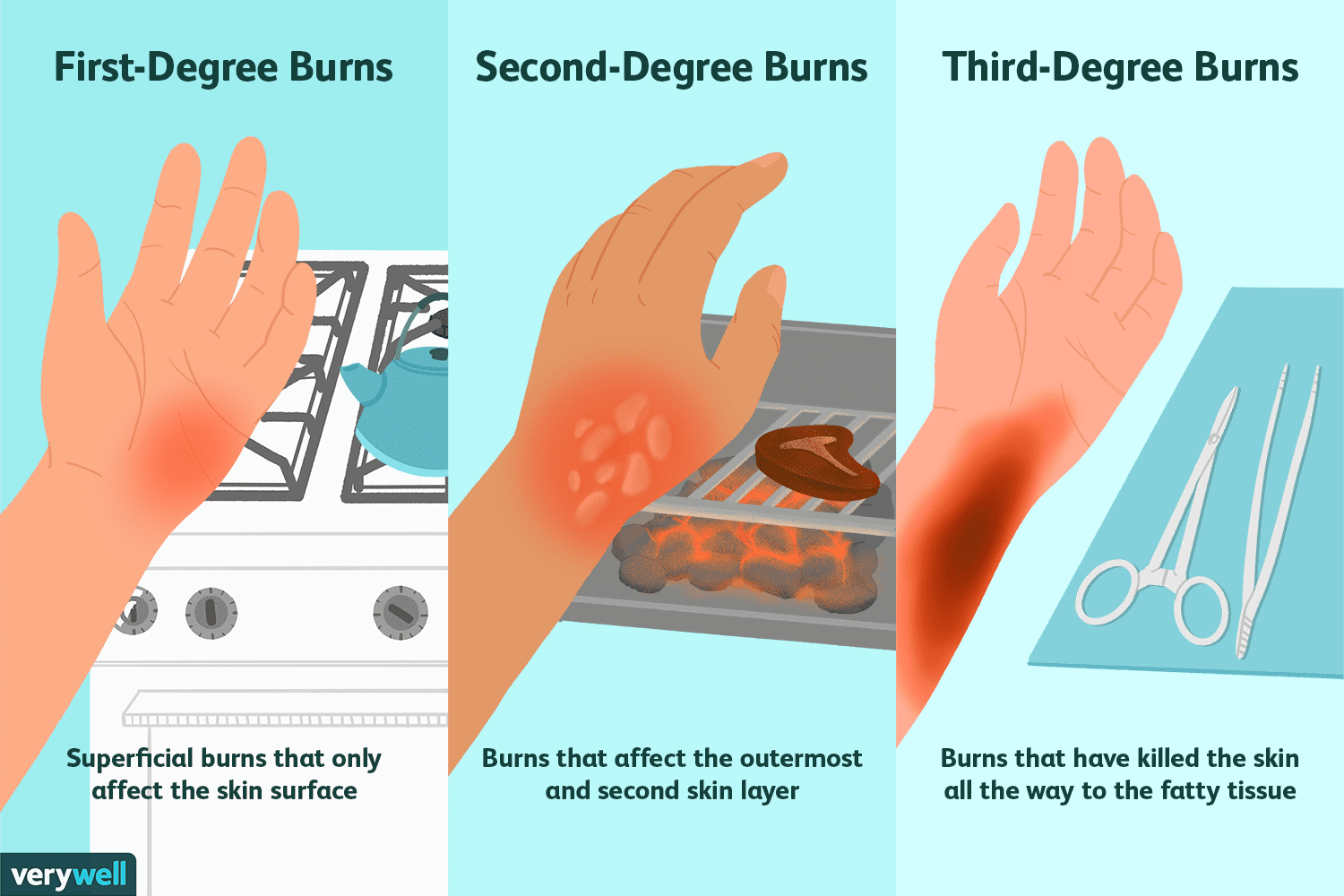
Third Degree Burn
Definition: A severe burn that damages all layers of skin—epidermis, dermis, and sometimes deeper tissues.
Symptoms: Skin may look white, black, or leathery; no pain in the area due to nerve damage.
Location: Can affect any body part exposed to intense heat, chemicals, or electricity.
Importance: Requires urgent medical care; healing is slow and often needs skin grafts.
Quick Tip: Never treat this at home—call emergency services immediately.
Fourth Degree Burn
Definition: A burn that goes through all skin layers and into muscle, bone, or deeper tissues.
Symptoms: Charred skin, exposed tissue, no pain due to complete nerve destruction.
Location: Often from prolonged exposure to fire, electricity, or chemicals.
Importance: Life-threatening; requires emergency care, surgery, and often amputation or grafting.
Quick Tip: This is a medical emergency—call 911 immediately and avoid touching or treating the area
Scar
Definition: A mark left on the skin after healing from a wound or injury.
Function: Protects the repaired area with collagen, but lacks full strength and flexibility.
Location: Can form anywhere the skin or tissue was damaged.
Importance: Shows where healing occurred; may affect appearance or movement depending on depth.
Quick Tip: Keep healing skin moisturized and protected from sun to reduce scarring.
Immune System
Definition: Your body’s defense network against germs and disease.
Function: Detects, attacks, and remembers harmful invaders.
Location: Found in blood, lymph nodes, bone marrow, and more.
Importance: Keeps you healthy and heals damage.
Quick Tip: Sleep, eat well, and manage stress to stay strong.
First line of defense
Definition: Physical barriers like skin and mucous membranes.
Importance: Prevents pathogen entry.
Function: Blocks invaders before they enter.
Location: Body surfaces.
Quick Tip: Washing hands strengthens this line.
Second line of defense
Definition: Non-specific immune cells like neutrophils.
Importance: Attacks invaders inside the body.
Function: Causes inflammation and fever.
Location: Bloodstream.
Quick Tip: Fever = immune system in action.
Third Line of Defense
Definition: Specific immune cells (T and B lymphocytes).
Importance: Targets invaders and builds memory.
Function: Produces antibodies and long-term